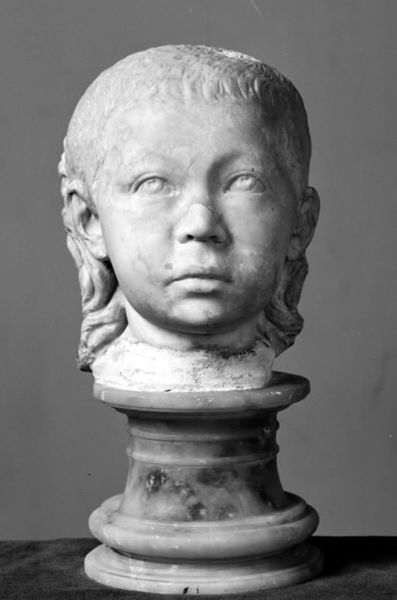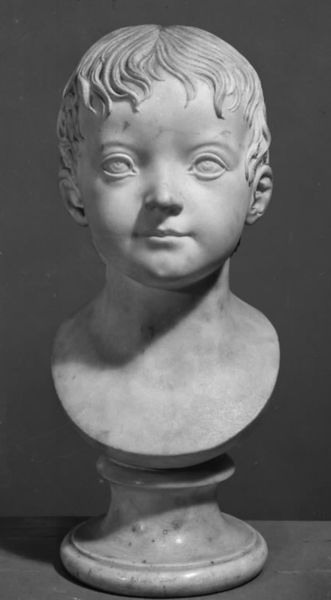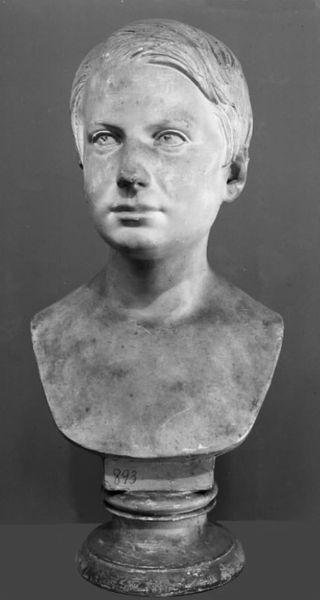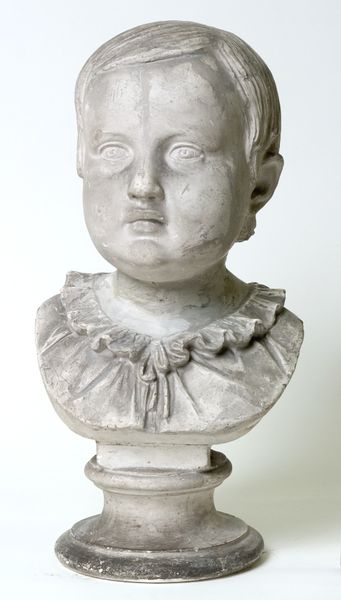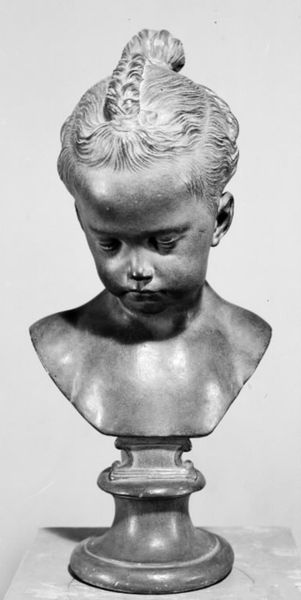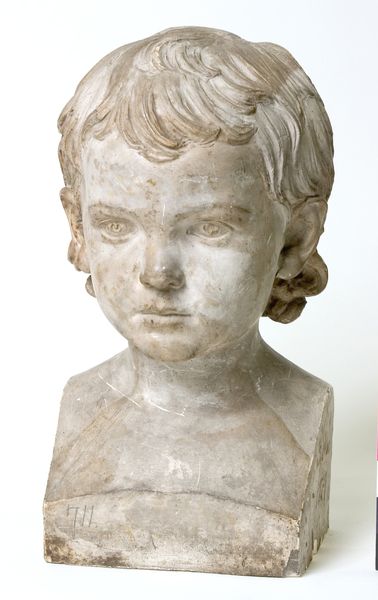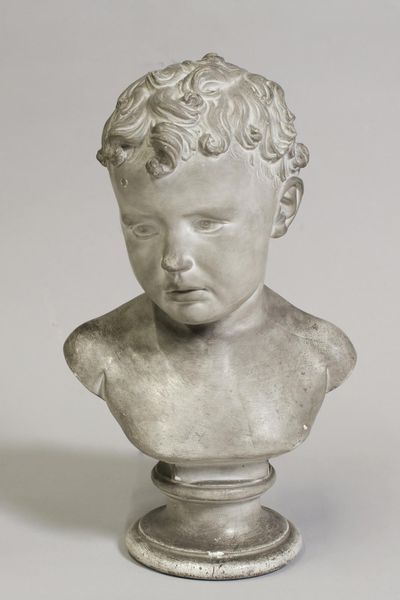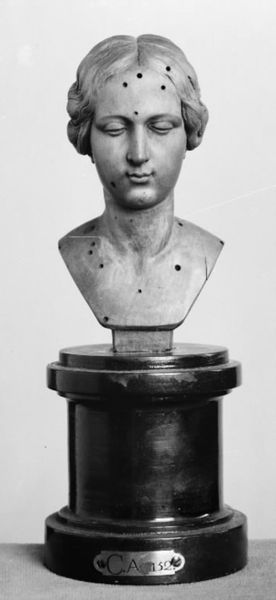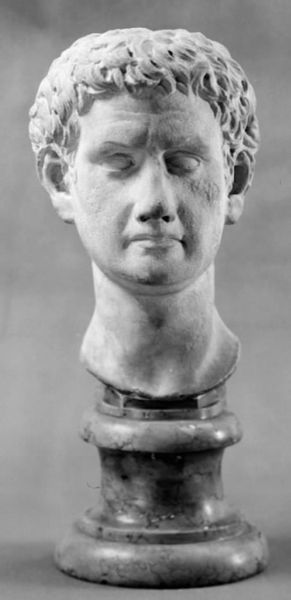
sculpture, marble
#
portrait
#
sculpture
#
classical-realism
#
sculpture
#
black and white
#
marble
#
realism
Dimensions: 30 cm (height) (Netto)
Curator: Ludvig Brandstrup crafted this marble bust, entitled “Portrait Bust of a Boy,” between 1886 and 1891. The piece resides here at the SMK, Statens Museum for Kunst. Editor: Striking. Even in black and white, you can see how he has meticulously captured the smooth, almost luminous texture of skin against the cool solidity of the marble. The formal contrast is powerful. Curator: The interplay of light on the surface is certainly intentional. Brandstrup’s decision to render this subject, most likely a young boy of some privilege, in marble nods to classical traditions of portraiture. Marble, with its connotations of permanence and purity, elevates the sitter. We also need to note, this particular choice was aligned with the prevalent academic Realism of the late 19th century, a cultural embrace of both historical and modern. Editor: I can see the historical nod, definitely. But, moving past the surface polish, what about the composition? The rigid pose, the upward gaze...it projects a sense of poised innocence. The smoothness of the surface creates an interesting interplay with the details like the intricate layering of the boy’s hair, which provides visual complexity that disrupts an otherwise simple form. It begs the question, are we supposed to be capturing realism or idealism here? Curator: The artist most likely aimed to idealize the sitter through realistically portraying him, an emerging concept at this point in history. The piece exists as a representation of not only the individual boy, but also of a greater idealized segment of Danish society that was slowly forming with new and modern industries rising at the time. The choice of marble and the skill in execution represent economic investment of a high end society at the time. The bust then, is evidence of access and opportunity during Brandstrup's own time period, that this individual held significant prestige within their world, the society that ultimately produced them. Editor: So the artistic craftsmanship here is representative of this boy's cultural identity? I hadn't thought about the marble choice within that framework. Curator: Exactly. The value we assign is a marker, not of objective worth, but of situated desire. We are no different today, buying and selling artworks to signal taste and prestige, and more subtly to claim entry or higher status within society. Editor: That offers an entirely new angle into viewing classical works; one that brings me outside and more broadly beyond, the canon's emphasis. Thank you. Curator: Anytime. I appreciate the attention you've brought to the purely aesthetic.
Comments
No comments
Be the first to comment and join the conversation on the ultimate creative platform.
